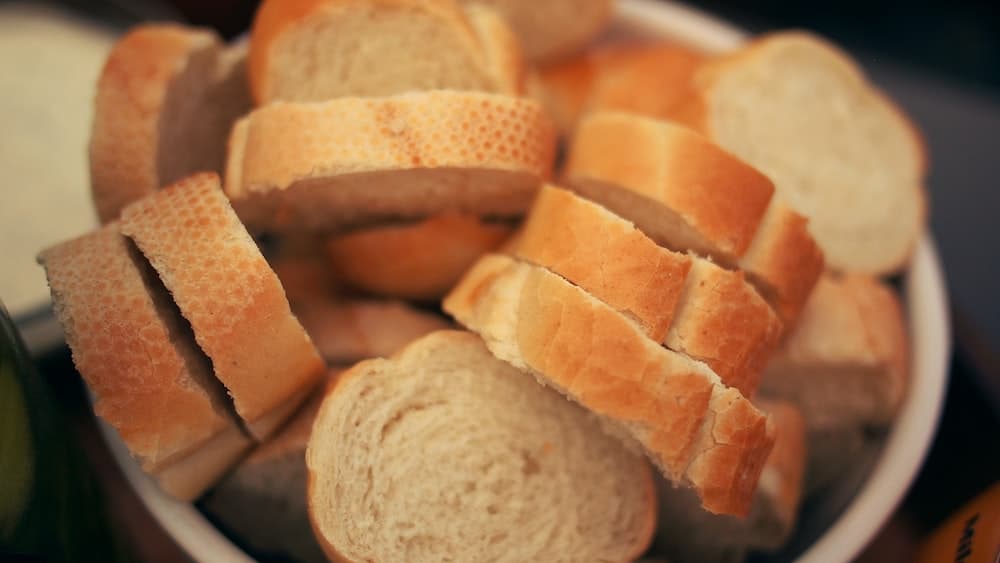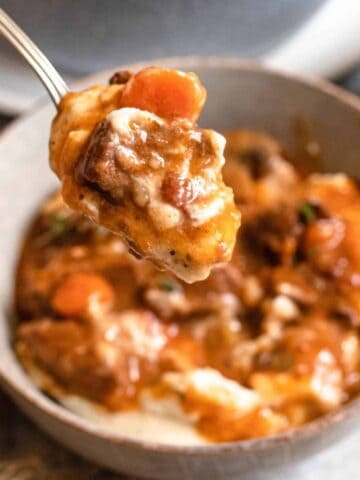While bread is an important part of both French and Italian cuisine, there are differences between the French Bread and Italian Bread. Use these tips to help you spot the difference between the two and choose the best bread for your meal!

There are few smells more delightful and inviting than that of warm bread, fresh out of the oven. Crispy on the outside, chewy on the inside, it’s the perfect comfort food.
It’s also a vital part of both Italian and French cuisine and culture. You will hardly encounter a meal in Italy or France that doesn’t include bread in some form.
Special shops prepare fresh bread daily and the artists who create this delicacy are celebrated.
However, if you think the bread in both countries is the same, you would be mistaken. Despite the generic forms of “French” bread or “Italian” bread you might find at your local chain grocery store, there is a difference between French and Italian bread and there are certain traits that make different loaves the best choice for different meals.
If you are unsure and want to find the most authentic bread to serve with your next French or Italian dish, here are a few tips to help you distinguish between the two.
It is important to note that there are many different types of French bread and types of Italian bread, but this article will give a general overview. Then make sure to prepare a big pan of Baked Mostaccioli and dunk the bread of choice into it.
Ingredients/Taste

French bread is made very simply with white flour, water, yeast and salt.
It’s actually law in France that the signature loaves of French bread or baguette cannot contain any added butter or fat and must have a certain weight. This French law was made to uphold the consistency and quality of bread, particularly the French baguette. Traditionally, butter is not even served with French bread during meals.
There are types of bread in France, like croissant or brioche bread, that break this rule but that is because these are considered pastries and not bread.
Italian bread usually contains some milk, olive oil or even some sugar. It does not usually contain salt. This creates a wetter dough and a more crusty bread.
While you may think adding in oil and sugar makes Italian bread sweeter, this is not actually the case. French bread is considered sweeter than Italian bread and Italy is known for more savory breads, especially in Italian focaccia bread that is baked with herbs and sometimes tomatoes.
Part of the savory flavor of Italian bread comes from the way it is made. It is traditionally cooked in a flat stone oven which gives it a naturally smoky flavor.
It’s also important to note that French bread is generally the same across the country while there are regional specialties in Italy. There are distinct differences in the kinds of bread and flavors that each Italian region produces and enjoys, with a large focus on using local ingredients.
Shape

The shape of bread is probably the quickest way to tell the difference between French and Italian bread at first glance.
Traditional French bread is more narrow and long (like a traditional baguette), while authentic Italian bread loaves have a more round shape like circles or ovals.
It’s possible to find bread of all shapes and sizes in either country, including loaves sold in the shape of a ring. But generally French bread will be sold in long loaves and Italian is more short and thick.
Texture

Both breads could be described as having a hard crust and a soft interior, but there is a slight difference.
Italian bread, because it is cooked in a stone oven, is always crispy on the outside and tends to be more dense than French bread on the inside. The interior of Italian bread still has a chewy crumb.
French bread is crispy on the outside but it can be cooked in any oven which may make it slightly softer and lighter.
Baking Method
The preparation of French bread does not call for any specific oven. French bakers may use a normal gas oven or electric convection ovens to do the job just fine.
Italian bread is different. Italian bakers use a flat stone or wood fire oven to achieve the beautiful smoky flavor that their bread is known for. This method has always been used to create a perfectly crusty loaf.
Both breads are cooked at a similar temperature and for about the same amount of time.
How to Serve

Bread is a vital part of both French and Italian cuisine, but it is used in different ways.
French bread is eaten any time of day. There is usually some type of bread eaten for breakfast with jam, used for sandwiches for lunch, served as a starter with dinner and even enjoyed with cheese for dessert. A slice or piece of baguette is likely to be served in a bread basket with every meal.
French bread shops, called boulangeries, serve up fresh bread all day long. This is important because French people like to have their homemade bread as fresh as possible.
Italian bread is often served as a side along with the main courses and is used to soak up soups or rich sauce. It is almost always served with the meal, not before or after.
Italians also do not use butter on their bread, nor do they dip it in olive oil (despite what some fancy Italian-American restaurants will have you believe). Olive oil may be drizzled on top and toasted for an appetizer.
While most Americans associate bread with pasta, Italians do not typically eat their pasta with bread. Instead, they use bread to eat soup, meat or vegetables.
Which Breads are Italian?

- Focaccia
- Ciabatta
- Grissino
- Pane Toscano
- Pizza Bianca
Which Breads are French?

- Baguette
- French Bread
- Ficelle
- Pain Brie
- Pain au Son
- Sourdough bread
- Brioche and Croissant (These both contain butter and would fall more into the category or pastries than bread)
FAQs

French bread is generally considered to be a softer, lighter bread than Italian bread. Italian bread is cooked in a stone or wood fire oven which makes it extra crispy and a bit more dense.
Brioche is a popular French bread. It is a sweet bread made with eggs and butter, which technically makes it a pastry.
If you have ever had bread in Italy or France, you may have noticed the stark quality difference from bread made in the United States. While the ingredients may be the same, the quality of the ingredients is very different. American bread flour may contain fillers that are not allowed in France or Italy. This helps the bread stay fresh on the shelf for longer. But nothing beats homemade bread made with the freshest ingredients possible.







Leave a Reply